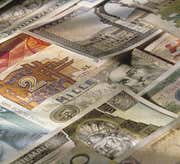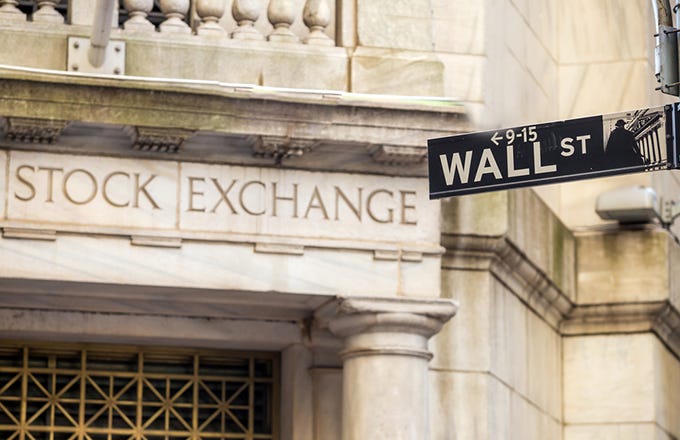The price/earnings to growth ratio, commonly referred to as the PEG ratio, is obviously closely related to the P/E ratio. The PEG ratio is a refinement of the P/E ratio and factors in a stock's estimated earnings growth into its current valuation. By comparing a stock's P/E ratio with its projected, or estimated, earnings per share (EPS) growth, investors are given insight into the degree of overpricing or underpricing of a stock's current valuation, as indicated by the traditional P/E ratio.
The general consensus is that if the PEG ratio indicates a value of 1, this means that the market is correctly valuing (the current P/E ratio) a stock in accordance with the stock's current estimated earnings per share growth. If the PEG ratio is less than 1, this means that EPS growth is potentially able to surpass the market's current valuation. In other words, the stock's price is being undervalued. On the other hand, stocks with high PEG ratios can indicate just the opposite - that the stock is currently overvalued.
Formula:
Components:
For the numerator, we are using the fictitious Zinzibar Holdings' P/E ratio, as calculated in the last chapter, for its fiscal yearend, December 30, 2017. The denominator, estimated earnings per share growth in 2018, is based on data found in a Value Line stock report on Zinzibar Holdings.
Variations:
None
Commentary:
While the P/E ratio represents a very simple and widely used method of valuing a stock, it does lack one very important variable. The assumption with high P/E stocks (generally of the growth variety) is that investors are willing to buy at a high price because they believe that the stock has significant growth potential. The PEG ratio helps investors determine the degree of reliability of that growth assumption.
Although the PEG ratio improves upon (i.e. provides additional valuation insight) the P/E ratio, it is still far from perfect. The problem lies with the numerator and the denominator in the equation. Misreading of a company's and/or analysts' predictions of future earnings are very common. Also, investor sentiment regarding a stock's pricing and earnings prospects is usually overly optimistic during bull markets and overly pessimistic in bear markets.
The question of where investors can source the data necessary to calculate the PEG ratio focuses entirely on the estimated future growth of per-share earnings. A stock's P/E ratio appears in virtually all price quotes regardless of their origin. Estimated earnings growth shows up in investment research reports and financial analysts' comments in the financial press but may require some digging to find it.
In this regard, the historical and estimated performance of a company's earnings per share is easily obtained from Value Line stock reports, which are available by subscription to the Value Line Investment Survey. It should also be noted that most public libraries carry a Value Line subscription, which, therefore, makes its stock reports available free of charge to the general public.
Using Zinzibar Holdings as an illustration, let's take a look at the data in question in a December 1, 2016 Value Line stock report on the company. At the top of the report, Value Line reports a trailing P/E ratio of 22.6. Zinzibar Holdings went public in 2011, so we have five years of actual EPS, as well as Value Line's one, two, and three-to-five year EPS estimates in the per share data box.
Value Line estimates a +11% EPS growth for the 2005-2006 period and +14% growth rate for 2017. So, at yearend 2016 we are looking at a PEG ratio for Zinzibar of 1.61 (22.6 P/E ratio ÷ 14% EPS growth). Some peer company PEG ratio comparisons would give investors an idea of the strength or weakness of this valuation indicator at that point in time.
To learn more, check out Understanding The P/E Ratio,Analyze Investments Quickly With Ratios and Move Over P/E, Make Way For The PEG.
Investment Valuation Ratios: Price/Sales Ratio
-
 Investing
Investing5 must-have metrics for value investors
In this article, we outline the five ratios that can help value investors find the most undervalued stocks in the market. -
 Investing
InvestingCan Investors Trust The P/E Ratio?
The P/E ratio is one of the most popular stock market ratios, but it has some serious flaws that investors should know about. -
 Investing
InvestingAre stocks with low P/E ratios always better?
Is a stock with a lower P/E ratio always a better investment than a stock with a higher one? The short answer is no. The long answer is it depends. -
 Investing
InvestingSXC Health Solutions Corp. (USA) Among the Nasdaq's Biggest Movers
The market is having a bad day so far: the Nasdaq is trading down 0.3%; the S&P 500 has declined 0.4%; and the Dow has slipped 0.5%. The Nasdaq Composite Index is a capitalization-weighted index, ... -
 Investing
InvestingSysco and Other Big Movers In Services
The market has been slipping so far today. The Nasdaq has fallen 0.3%; the S&P 500 has fallen 0.4%; and the Dow has declined 0.5%. The Services sector (IYC) is currently lagging behind the overall ... -
 Investing
InvestingIs Stock With a Lower P/E Always A Better Choice?
Is a stock with a lower P/E always a better investment than a stock with a higher one? The short answer is no, but it depends on a few things. -
 Investing
InvestingUnderstanding The P/E Ratio
Learn what the price/earnings ratio really means and how you should use it to value companies.



